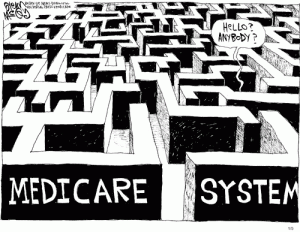By Greta Garniss
There has been much talk targeting the middle-income mature resident in housing development as Steve Moran mentioned in his August 29th post, and another post from July. This group is an underserved entity and getting properties built is a growing challenge.
What We Have
As we know, some of the reasons why development has to target upper-income seniors are due to cost, including but not limited to, the cost of land, labor, and materials. It is necessary to have large properties with a wealth of unit-specific and shared amenities that are able to attract upper-income residents to generate significant returns. I call these Cadillac properties. Hundreds of Cadillac properties have delivered across the country over the last five years. These properties have high-end finishes and features, as well as a wealth of community amenities. These are very nice properties and there are people willing and able to pay. However, this group is shrinking while other seniors at some of these properties are outliving their savings, having to go on Medicaid.
What We Need
There is a need for more Ford and Chevy properties. The majority of seniors average $50,000 per year in income. Cadillac properties are out of reach for this group. Industry professionals say that mature residents want a highly amenitized property. However, I have found that there is a significant group of seniors that are perfectly happy without a luxury movie theater, indoor/outdoor pool, granite countertops, or stainless steel appliances. These people want a safe and comfortable place to live. White appliances, new laminate countertops (wide variety of colors and patterns) with a smaller beauty salon and movie theatre are some of the answers from a design and development perspective. These options have been proposed by others and are already present in the market. Not every senior wants high-end features and finishes because they worry about how much it will cost (rent). This issue is especially important in suburban and rural communities where incomes are lower.
Time For Change
People say think outside the box. I say blow up the box. Steve Lindsey of Garden Spot Communities has the right idea. It’s a cooperative housing, co-living model in the form of a large house. This is an age-restricted, independent living model. This development shows there is another option. Instead of going big, we go small, which is more appropriate to underserved suburban and rural markets.
The time has come to focus more on returning to the grassroots. We cannot only rely on traditional financing options such as the big banks, or the REITs because these smaller properties don’t meet their requirements. It is time to pool more local resources. It is time to use local and regional banks with Community Reinvestment Act provisions. It is time to engage technical and vocational students, under the supervision of professionals, who can design and build smaller housing developments. The students can get real-world experience and see the results of their efforts. The new development leads to additional property tax revenue that benefits an entire community. It is time to engage more churches, foundations, and volunteer groups. It is time to educate communities about housing for mature residents with the goal of combatting myths, stereotypes, and NIMBYism. It is time to get large organizations like AARP, National Council on Aging, Senior Corps, and American Seniors Association, among others, more involved in development at the local level. It is time to go to the Gates Foundation, the Ford Foundation, Robert Wood Johnson Foundation, and other wealthy families (Fortune 100) and foundations that are looking to help. We use different combinations of resources to rebuild communities damaged by natural disasters. We can also use this method to get more housing built for the middle-income mature residents.








